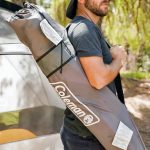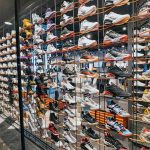Concerns that independent bicycle dealers (IBDs) are out of sync with the rapidly growing ranks of urban cyclists and financially strapped American families dominated much of the discussion at the National Bicycle Dealer Association/s annual executive conference last week.
The Bike Leadership Conference is held every April in Monterey, CA on the eve of the Subaru Sea Otter Classic, which draws about 65,000 people and more than 400 vendors to nearby Mazda Raceway Laguna Seca for four days of biking racing, product demos and family fun. It also coincides with the IBD Summit, which provides two days of seminars aimed at helping bike shops improve their performance.
While many in the industry have attributed a drop in 2013 bicycle sales to unusually rainy and cold spring weather, discussions at the conference revolved around whether recreation minded IBDs and their vendors may be losing market share even as biking participation takes off in America’s cities. Thanks largely to advocacy work done by the bike industry and its customers, U.S. cities are plowing tens of millions of dollars into bike lanes in a bid to ease congestion, promote healthy lifestyles and lure the young professionals and employers they view as critical to sustainable growth.
Are IBDs overlooking the urban cycling renaissance?
Yet most of the nation’s mom and pop bike shops continue to cater primarily to affluent, hardcore enthusiasts with products and marketing messages that are irrelevant to most of America. IBD sales have been essentially flat for five years despite population growth and import data suggest mass merchants and full-line sporting goods stores are gaining market share with sub-$500 bikes.
“We see things changing and we want to adapt,” said Peter Flax, editor for Bicycling Magazine. “Our core readers are spandex wearing enthusiasts, but we also are seeing more women and children turning to bikes. Participation in the 50 biggest cities is going up in like crazy. Do you want to be a leader in that or a follower?”
IBDs who fail to adapt risk missing out on two major trends that many feel will fuel growth in coming years: urban transit and electrically-assisted bicycles, or eBikes.
“Cities are being incredibly creative in finding ways to fund their own bike infrastructure and it's amazing,” said Mike Mercuri, SRAM VP for product and marketing and chairman of PeopleForBikes, a non-profit advocacy group that receives significant funding from the cycling industry. Among those cities is Chicago, where Mayor Rahm Emanuel has pledged to build 100 miles of protected bike lanes; Indianapolis, where a Republican mayor is leading the charge for 200 miles of bike lanes; and Washington DC, which has seen tremendous growth in cycling since installing protected bike lanes.
Facebook gets a loaner fleet
Corporations are also become big advocates. Facebook has been able to fit twice as many employees on its campus in Menlo Park, CA than the previous occupant by agreeing to cap daily car tips to and from the site. In addition to promoting public transit, the company has bought a fleet of loaner bikes and opened an on-site bike transit hub complete with bike mechanics to encourage its employees to commute by bike.
America now boasts 40 bike share systems with 700,000 bikes and will double to 80 in the next few years, according to Tim Blumenthal, president of PeopleForBikes. Customers of New York City’s bike share program biked 14 million miles in its first year of operation.
With real estate and construction prices pushing the cost of a single downtown parking space to $40,000 or more, developers are increasingly negotiating with city governments to reduce parking requirements. Coca-Cola, which is moving 2,000 employees from the suburbs to downtown Atlanta, is helping pay for bike lanes to the site. Amazon agreed to install protected bike lanes in downtown Seattle if the city would vacate several alleys in an area it wants to use for a new office building.
While Currie Technologies CEO expects eBike sales to grow by as much as 20 percent a year in coming years, only about 15 percent of the company’s dealers are IBDs. The remaining 85 percent are entrepreneurs who see the potential for eBikes but lack the customer service knowledge and mechanics needed to sustain the business long timer. He is hopeful that a new crop of sport eBikes hitting the US market will turn heads in the more recreationally oriented U.S. IBD channel.
Big smiles on eBikes
That certainly appeared to be the case at the at the Sea Otter Classic, where eBike systems manufacturer Robert Bosch GmbH was offering demo rides on a new crop of eBikes Haibike, Lapierre and Felt will introduce to the North American market this year. (See related article inside.)
Silver-haired enthusiasts and young moms who rarely ride walked away from their demo rides with big smiles on their faces.
Asked about his experience taking a $5,500 Lapierre Overvolt FS 900 eBike out for a spin, former mountain bike and road racer Pete Lopinto responded without hesitation.
“It made it way better,” said Lopinto. Now 34, Lopinto works at The Pros Closet, an eBay store specializing in reselling new and used cycling gear.
He views eBikes as the latest in a line of innovations that have expanded participation in cycling. He foresees mountain eBikes catching on with young riders who want to get in more cross country runs as well as Baby Boomers who want to keep riding, but are struggling to keep up with fitter friends.
“For that application,” he said, “I could see it being really big.”















